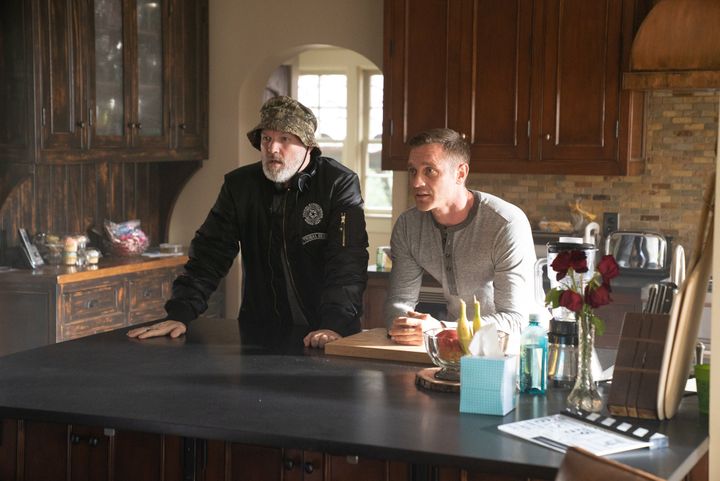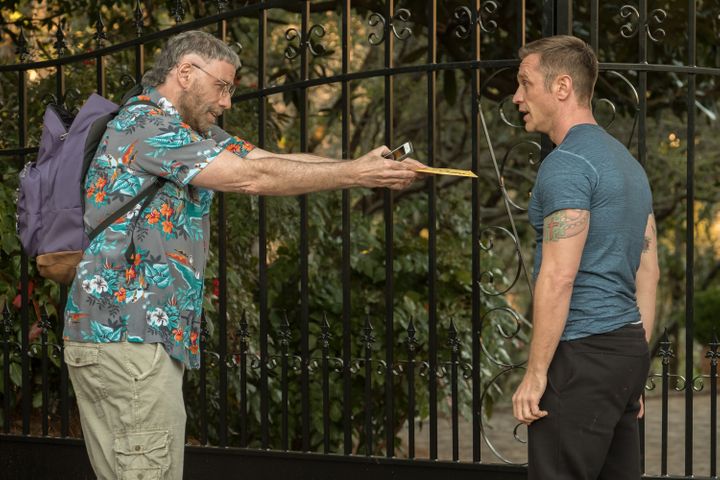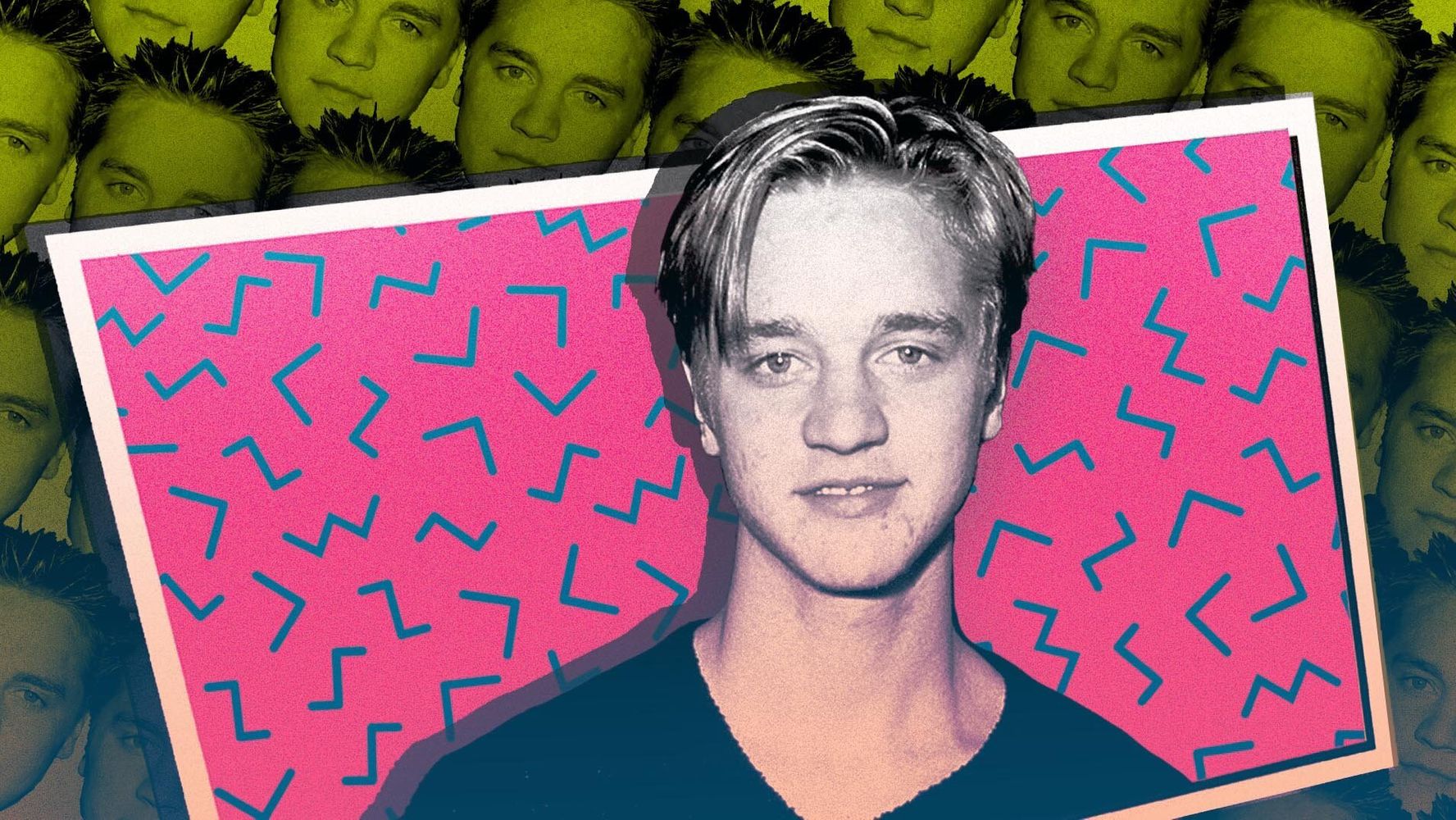[ad_1]
If that phrase rewinds a memory tape in your mind, Devon Sawa was surely a big part of your 1990s viewing habits.
The actor ― now 40, married, and a father of two ― was the object of adolescent affection as the star of such mid-’90s movies as “Little Giants,” “Now and Then” and “Wild America.” But it was his dance with Christina Ricci at the end of “Casper” that truly lit young hearts on fire. He was a blue-eyed, bowl-cut kid with a spark, and Amblin Entertainment’s Steven Spielberg wasn’t passing him by.
“I put myself on VHS tape when I was 13, 14, for the part of Casper and I think it just ended up at the right place, on the right desk, at the right time,” Sawa told HuffPost over the phone.
As he grew past puberty, Sawa took on more “rebellious” roles in Eminem’s “Stan” music video, as well as films like “Idle Hands” and “Final Destination,” before taking a much-needed break from the spotlight. Then, with years of contemplation under his belt, he officially returned to the screen in the series “Nikita” in 2013, and has been popping up in more indie fare ever since.
This week, he’s set to appear alongside John Travolta in “The Fanatic,” written and directed by Limp Bizkit frontman Fred Durst. (Yes, the one who did it all for the nookie.) The psychological thriller follows a socially awkward fan, Moose (Travolta), who takes his obsession with celebrity Hunter Dunbar (Sawa) too far when he risks both their lives in pursuit of an autograph. It’s low-budget horror at its finest, and that’s to say Sawa is still looking just fine. He chatted with HuffPost about his teen heartthrob days and what it’s like to now be able to work with some of the actors he idolized as a child star.
“The Fanatic” is a warning to be wary about idolizing your favorite celebrities, so don’t let me down Devon because, spoiler alert, you were my school-girl crush.
Oh my goodness. That’s so much pressure to start! OK, I’ll try my best.
You were on Bop magazine, BB magazine. A true teen cover star of the ’90s.
By 1995, you had done “Little Giants,” “Casper” and “Now and Then.” What do you remember about that stage of your career ― being a young kid but having a ton of success?
The thing with that whole stage of my life is, unlike a lot of young child actors, it was nothing but positive. I got to travel the world with my mother, and sometimes my father came, and I worked for some of the bigger companies ―New Line, Amblin and Warner Brothers. It was just a great experience, and it was a lot of fun.
And you grew up in Canada, so were you able to escape the Hollywood madness of it all?
Yes. That was the beautiful thing about not having internet back then. Those magazines like Kid Bop, BB, Tiger Beat, they weren’t big in Vancouver. They didn’t come over the border and weren’t a huge thing. So when I went home, I was just me. I was able to be myself. I didn’t know how big it all was down in the States.
How is it for you now, though? Growing out of the young heartthrob phase had to be a difficult journey, at points.
It felt like three journeys. The [young heartthrob stage] was a journey, and then there was a journey after that, which is probably the toughest one. I was getting out of that particular stage of my life, the what I call, “not being taken really seriously as an actor” period ― or that what was what I thought back then. Then, I just wanted to do the craziest things I could, like the [Eminem] “Stan” video, “SLC Punk!,” “Idle Hands” ― anything that would get me away from that Bop, Tiger Beat, whole heartthrob stuff. And then after that there was a little bit of a break. I went home for five or six years, I went to Southeast Asia with my wife [Dawni Sahanovitch], and then I came back and I’m on my third stage where it’s much more adult. It’s been … it’s been a journey.
It’s a different world for actors now with social media. Do you ever imagine what it would have been like for you as a child actor with Twitter, Instagram and all these people being able to follow you?
Yeah, I don’t know how I would’ve managed. I don’t know how half of these kids do it today. I think it would have been a lot different financially. I mean, we never got paid for any of that stuff ― no one got paid for the magazines, it was just publicity. And so, nowadays, these kids have come up with ways of turning it into something else. It would probably be a lot different for me.
I’m sure you know “Now and Then” just hit Netflix, and people have been devouring it. Have you seen an uptick in followers at all? The younger generation discovering it?
It’s been such a positive experience. It’s a great movie, and it’s got a little heat again with people seeing it for the first time or revisiting it. That’s cool to watch. I see a lot of people tell me about how they’re showing the movie to their kids and how their kids are falling in love with it. Some of the cast and producers and the director went and saw it at Santa Monica’s Aero Theatre [in California], and we all said it just stands the test of time.
Do you have a favorite scene from that movie?
I would have to say the scene with Christina [Ricci] and I on the swing, the kiss scene, just because I think we had such great chemistry and she’s such a great actress. I remember it being so fun to shoot because it was just flowing. Everybody was liking it ― the crew, the cast ― everybody was just digging it.
You and Christina had done “Casper” together too, so you already had that connection, I’m assuming.
Yeah, but there was another kid [Malachi Pearson] who did the voice of Casper and he was there for like three months doing the lion’s share of the work. I just showed up for a couple of days and did that last 30 to 45 seconds. So Christina and I didn’t get to know each other that well, but she suggested me for “Now and Then,” and that’s when we really got to know each other.
[Editor’s note: Sawa already confirmed he and Ricci never dated, sorry.]
“The Fanatic” focuses on one rapid fan’s obsession with his favorite celebrity. This fan encounter, however, goes horribly, horribly wrong. Tell me, how did you come to appear in a Limp Bizkit-y thriller starring John Travolta? Did you know Fred Durst?
I didn’t know Fred at all. What happened is I’d done a movie [“Life on the Line”] with John Travolta a few years back and, you know, it was a good movie, it just didn’t do so well. But we enjoyed working with each other and he was set to do this movie and suggested me for it. Fred wasn’t sold all the way, so I went down to a studio and I laid all the scenes down ― every single scene you see in the movie was put on an audition tape and sent to Fred. Then, Fred spent a week with it where I begged, pleaded, my manager got on the phone with him. I basically had to fight to win the role, and I did.
I don’t think people would automatically think that Durst would direct movies, but he’s quite a talented filmmaker. Did you feel this movie was going to be something different when you got the pitch?
He did “The Education of Charlie Banks,” and then also “Longshots” with Ice Cube. Those are both great films and I think he just stayed under the radar for both of them. He’s a solid director, and stubborn in an artist’s way: He had to have his director of photography, he had to have the wardrobe the way it was, he had to have the lighting a certain way. He was stubborn in the best way an artist can be and it shows. Hollywood is kind of lacking that [artist’s approach] a lot right now, and that’s what I think this film is ― one of those arthouse movies with a small theatrical run that hopefully gets some legs and goes.

John Travolta completely transforms for this role. It’s pretty impressive, and frightening.
He was amazing. The movie I did with him a couple years ago, he was just a normal, great actor who showed up and did his work. We collaborated and did that whole thing. But this was the first time in the 30-something years I’ve worked where I’ve seen an actor stay in character. He came to set and everybody was instructed to call him Moose. He went to craft services as Moose. He came out of his trailer as Moose. He talked to the crew as Moose. He would walk back and forth like Moose. It was bizarre and inspiring.
That sounds a little bit creepy!
It was creepy. He would pull on his ear and sniff his finger like Moose. He had all of these things that he thought this guy would be doing. And then, on top of that, you have Fred Durst’s kind of Limp Bizkit energy going on that it all brought the world together.
This fan encounter goes beyond your character’s comfort level, and the situation implodes. Where did you pull inspiration from to get into the mindset of Hunter Dunbar?
We tried to look at the celebrities who have been pushed over the edge and flipped out ― the Alec Baldwins, the Sean Penns. They have been tormented so much that they have that moment where they lose it on a paparazzi or a fan that’s gone a little bit too far. That’s kind of where we went with this guy, you know what I mean? And he’s got so many issues going on in his life: he’s got problems with his wife, he’s got problems with his agent, he’s got problems with the maid. Then to put this crazy guy, who just shows up at his house asking for his autograph, on top of it all, it’s just a breaking point.
Did you ever have encounters with fans where you maybe felt uncomfortable?
I have never been in a situation like that. I don’t know whether it’s the Canadian in me or whatnot? Whenever someone approaches me at the airport for an autograph or a picture, I give it to them. I’m cool like that. But I have been with actors who will not take a picture with somebody. They’ve just had enough and they’re grumpy and they’ve got a little bit of a chip on their shoulder, so that’s sort of what I went for with this.
I’m sure as a public figure it’s hard to find a balance between your professional and personal lives, especially being a parent now.
There needs to be space, 100%.
Is it sort of meta for you to be a part of this project as it addresses the industry you’re in?
Yeah, you know what? I had just done one of those fan conventions and you could see where this guy could exist in the world. There’s actually a real-life Moose guy the film is based loosely on, and you could see how that guy might go a bit too far.

How was it for you to be back in that “Final Destination” vibe? The suspense, the gore.
It was nice to be in that horror kind of world again. The buckets of blood, the prosthetic hands, the prosthetic eyeballs. And it was also really phenomenal to have A-plus talent around, between Fred and John. It just felt good to be on set jamming with the pros.
Is that something you want to do in this third stage of your career, focus on working with artists that challenge you?
The reason I quit the business was I was not in a good headspace. I was not in a good place. And when I came back, I wanted to come back on my own terms. I wanted to do things that made me happy and made me want to keep doing this so I would never get to a place where I was just doing things for money. For instance, I did a movie with Guy Pearce [“Disturbing the Peace”] since I’d been a fan of his for such a long time. And the script was a two-hander with just Guy Pearce and I jamming on amazing material. And before that there was a thing with Sharon Stone where she plays my cracked out mother [“Life on the Line.”] I mean, this is just stuff that really makes me want to go to work, you know?
I’m sure the young Devon Sawa in you is like, “I get to work with Sharon Stone?!”
You have no idea! It was the greatest two days of my life. And it was Sharon Stone in like a version of “Casino.” When we wrapped, I was a happy guy.
“The Fanatic” is in theaters Aug. 30 and on Digital and On Demand Sept. 6.
REAL LIFE. REAL NEWS. REAL VOICES.
Help us tell more of the stories that matter from voices that too often remain unheard.
[ad_2]
Source link

